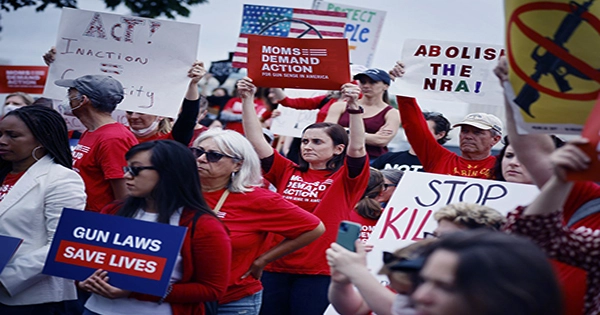Election forecasts based on public polling appear to be more incorrect. The 2022 midterm elections in the United States are a prime example.
On Election Day, Nov. 8, the nation appeared poised to cast a massive majority of Republican ballots in a so-called “Red Wave.”
A perfect storm was developing with high inflation, a shaky House of Representatives majority, and President Joe Biden’s dismal support ratings. According to polls, the Republicans were prepared to win by a wide margin and take control of both the House and the Senate.
We now know those predictions did not materialize. Democrats held onto the Senate and almost held onto the House. Republican results were lackluster at best.
Youth voters have been hailed as the catalyst that turned the Red Wave into a “Pink Splash.” The second-highest youth voter turnout in over 30 years was 27% of voters between the ages of 18 and 29. Furthermore, the only age category in which Democrats received a clear majority of votes was young people, who supported Democrats by almost 63%.
Are we accurately capturing public opinion given the reality of the election outcomes and the obvious lack of youth voter impact on projections?
What went wrong for pollsters
Historically, political theory or probability sampling and statistical models based on trends have both been used to predict election results. Whatever the paradigm, these projections depend on one thing: accurately reflecting the general people.
Public opinion polling is still anchored in the past, despite the fact that voting procedures have slowly started to adjust to the technological societal transformation, such as online possibilities in 2020.
Despite its vital importance to determining election forecasts, the presidential approval rating is “based on interviews conducted by landline and cellular telephones.” Similar to how probability sampling frequently relies on combining information from many sources, the majority of big media polls are carried out utilizing a conventional phone methodology.
Public polling initiatives continue to engage or, rather, disconnect youth voters by failing to comprehend where they spend their time online, despite the abundance of tales in popular culture about individuals disregarding “cold calls.”
How do young voters engage?
In the wake of U.S. midterms results that stunned political analysts, social media buzzed with commentary from young voters.
One user wrote: “Before the next election, you might want to find a better way to poll anyone under the age of 30 since they would rather pick up a pinless grenade than a call from an unknown number.”
Although this was obviously meant as a joke, the statement has some truth to it. Since 81% of millennials admit to feeling anxious before making a call and 75% believe phone calls to be “extremely time-consuming,” they have already been blamed for the demise of the phone call.
In any other industry, this data would signal an immediate need to pivot to a digital platform.
Engaging in the right place
The question of public engagement goes beyond “how” citizens are being polled. It must also ask “where.”
Simply switching polling techniques from telephone-based to online is insufficient. The engagement platform has importance.
Even though some pollsters used online surveys, these were frequently conducted through conventional news sources. The gap in election data cannot be filled by an opinion poll that is arbitrarily conducted within the same echo chamber of legacy media.
The way each generation consumes content online, particularly news, changes rapidly. Despite preferring Google, more than 40% of Gen Zers say they prefer TikTok for internet searches. Advertisers are increasingly starting to integrate their consumer surveys on websites like YouTube and TikTok.
Other political outreach groups have started to take note of this and modify their approaches.
In late August 2022, Élections Québec launched a TikTok campaign to generate interest in the provincial election. Playing into viral videos (like the so-called “corn kid”), some of its content garnered more than 350,000 views.
Despite predictions of a low voter turnout in Québec, 66% of the total population voted.
The sheer level of engagement on the platform and the participation of young voters speak loudly, even though it is challenging to empirically measure the influence of this particular political outreach approach on election results.
Looking to the future
Above all else, the 2022 U.S. midterms offer a positive glimpse into the future. No longer can young voters be cast as apathetic and disconnected.
A generational shift away from voter apathy is currently taking place, which is advantageous for all political parties.
The disconnected, in fact, seem to be those trying to accurately measure public opinion.
The “Pink Splash” offers a tough lesson in engagement for pollsters. Election polls will never accurately predict what will happen when people cast their ballots if they continue to employ the conventional methodologies.
















